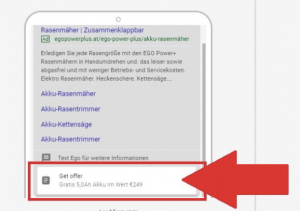Lead forms have been around for a while in the Google advertising network, but when we first tested them in late 2019, we didn’t get great results.
But the world of PPC changes fast. And given that we’re now halfway through 2020, we thought the time is ripe to give them another look for some client accounts.
Before we get started, let’s revisit what lead forms are.

What are Lead Forms?
Lead forms are forms that impression as an add-on to advertising campaigns.
They’re a way to generate new leads for your business.
You can create a new campaign with a new lead form or attach a new lead form to an existing campaign.
Lead forms come in two flavors: lead forms for Search campaigns and lead forms for TrueView for action video campaigns.
Lead forms for Search campaigns are currently in Beta.
In Search campaigns, lead forms are added as extensions. In video campaigns, lead forms are added during campaign creation and in campaign settings.
You can download the leads you get from these forms as a CSV file.
Here’s an example of what a form might look like as part of a Search ad (with credit to Search Engine Journal):

What Are the Requirements for Lead Forms?
Lead forms are only available when certain account requirements are met.
To create one, you must have:
- More than USD 50,000 total spend in Google Ads
- A good history of policy compliance
- An eligible vertical or sub-vertical. (Sensitive verticals or sub-verticals, e.g. adult content, aren’t eligible for lead forms.)
Different rules apply depending on whether you’re serving the form as part of a Search campaign or video campaign.
Video campaigns with a lead form will only serve if the person receiving the ad is signed in to their Google Account.
Lead forms for Search campaigns will serve on mobile and tablet devices running Android or iOS.
Lead forms for video campaigns will only serve on mobile and tablet devices running Android.
Why is it Time for a Second Look?
I see two reasons why the time might be right for lead forms.
1. More transactions on mobile
Not only is the volume of traffic on mobile continuing to grow, it also seems people are more willing to transact on mobile.
For example, one of our clients sells home furnishings. The client reports that customers will browse and purchase furnishings worth tens of thousands of dollars — and do it all on their phones.
Before, big purchases were almost always made from desktops.
2. Increased use of lead forms on social media platforms
Lead forms have become a regular feature on some social media platforms, such as Facebook and LinkedIn.
This has given social media users the chance to become comfortable with (and less suspicious of) these types of forms.
So whereas someone might have been reluctant to fill out a lead form before, they’re now more willing to do it.
Are Lead Forms Better Suited to B2B or B2C?
When I first learned about lead forms, my thoughts immediately went to business-to-business organizations.
But lately, I’ve been seeing how they can also be a good fit for business-to-consumer organizations.
Chili’s Grill & Bar is a great example that Google cites.
The restaurant chain had a promotion where you could get three menu items for $10.
It used lead forms as part of its video advertising campaigns to get people to sign up for its loyalty program.
As people watched the video ad, they could submit their name and email via the form that sat right below the video — and 7,800 of them did!
So clearly, lead forms aren’t limited to B2B.
This is one where you can think outside the box!
Are Lead Forms a Good Fit for Your Business?
If we suggest the use of lead forms during our next meeting, don’t be surprised.
And if you have thoughts about how they could support your business goals, we’re happy to hear those as well.






